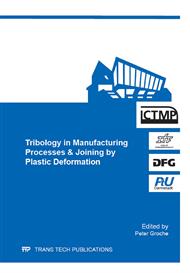p.103
p.111
p.120
p.129
p.137
p.142
p.152
p.168
p.175
Investigating the Effect of Ultrasonic Vibration on Hole Accuracy in Drilling of Metal Matrix Composites
Abstract:
Generally in the drilling of new engineering materials such as metal matrix composites, problems frequently occur in terms of poor finished surface, tool stress, tool wear, high drilling forces as well as low process reliability. A useful and promising method to overcome these problems is the use of ultrasonic vibration as an assistance, where high-frequency and low amplitude vibration are added to the conventional movement of cutting tools or workpieces. This research presents the new design of an ultrasonic assisted system and the experimental investigation of ultrasonically assisted drilling of Al/SiC metal matrix composites under different cutting conditions. The effect of cutting conditions and ultrasonic amplitude on the circularity, cylindericity, and hole oversize of the ultrasonically and conventionally drilled workpieces were investigated. The obtained results show that the ultrasonic vibration can improve the hole quality.
Info:
Periodical:
Pages:
137-141
Citation:
Online since:
June 2014
Authors:
Price:
Сopyright:
© 2014 Trans Tech Publications Ltd. All Rights Reserved
Share:
Citation:


